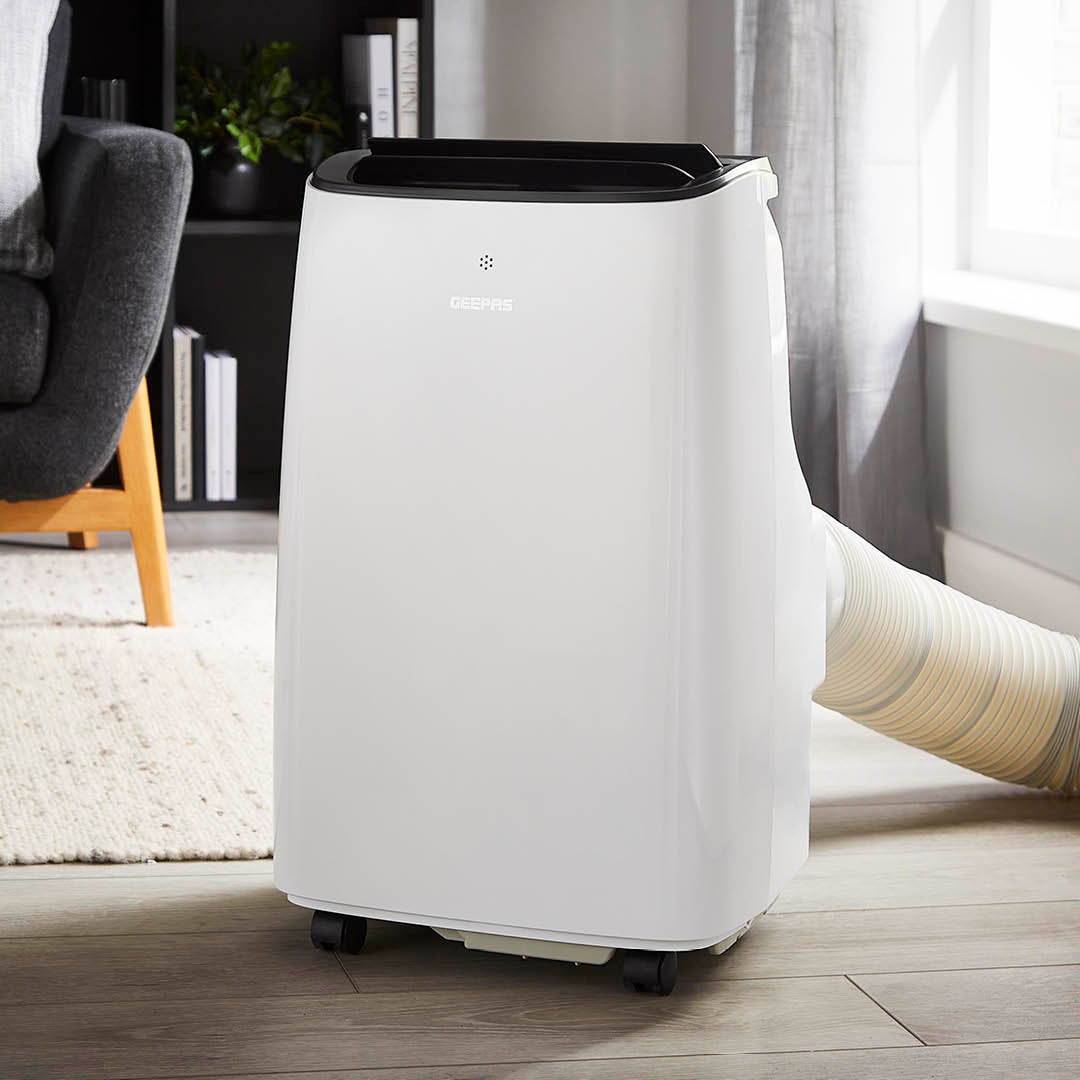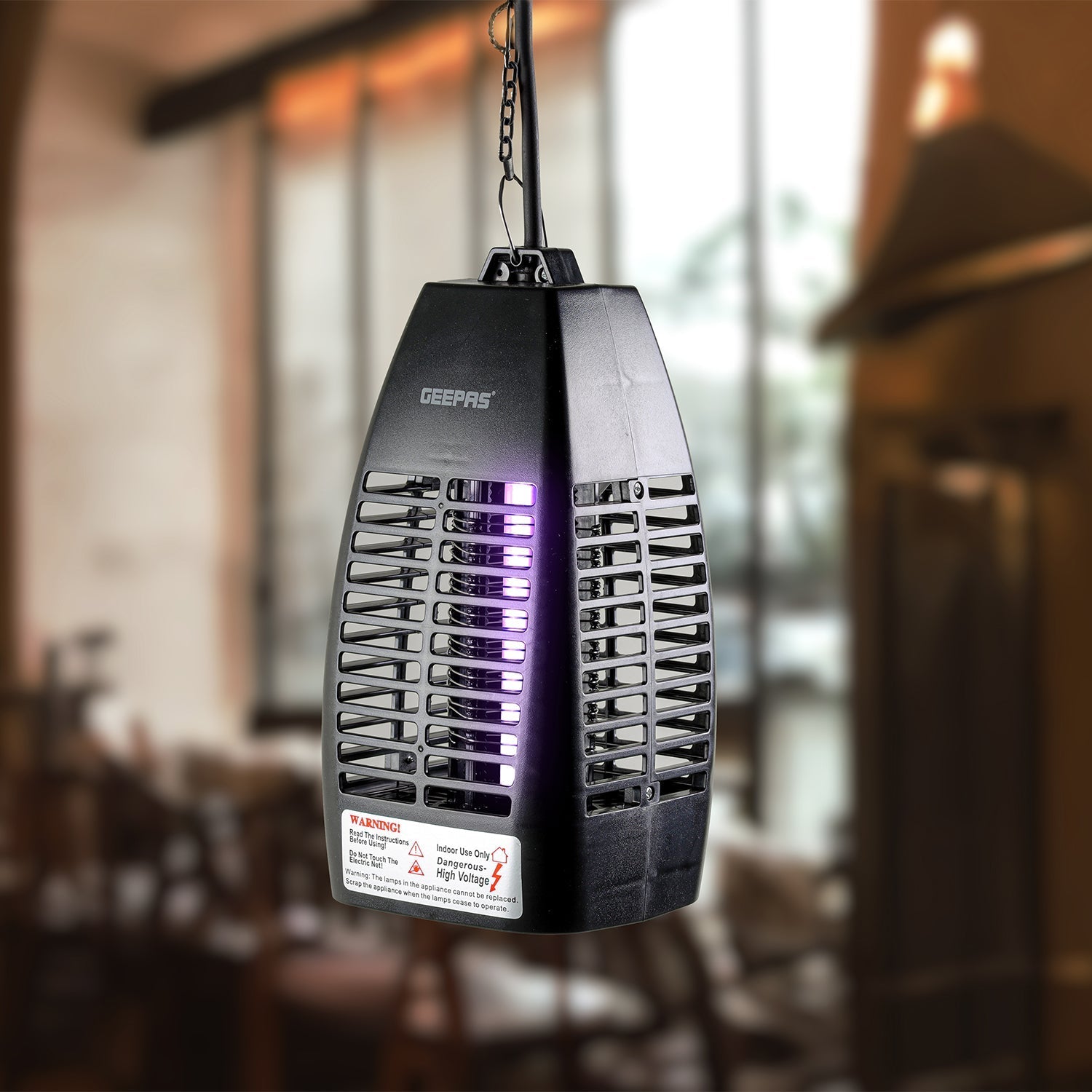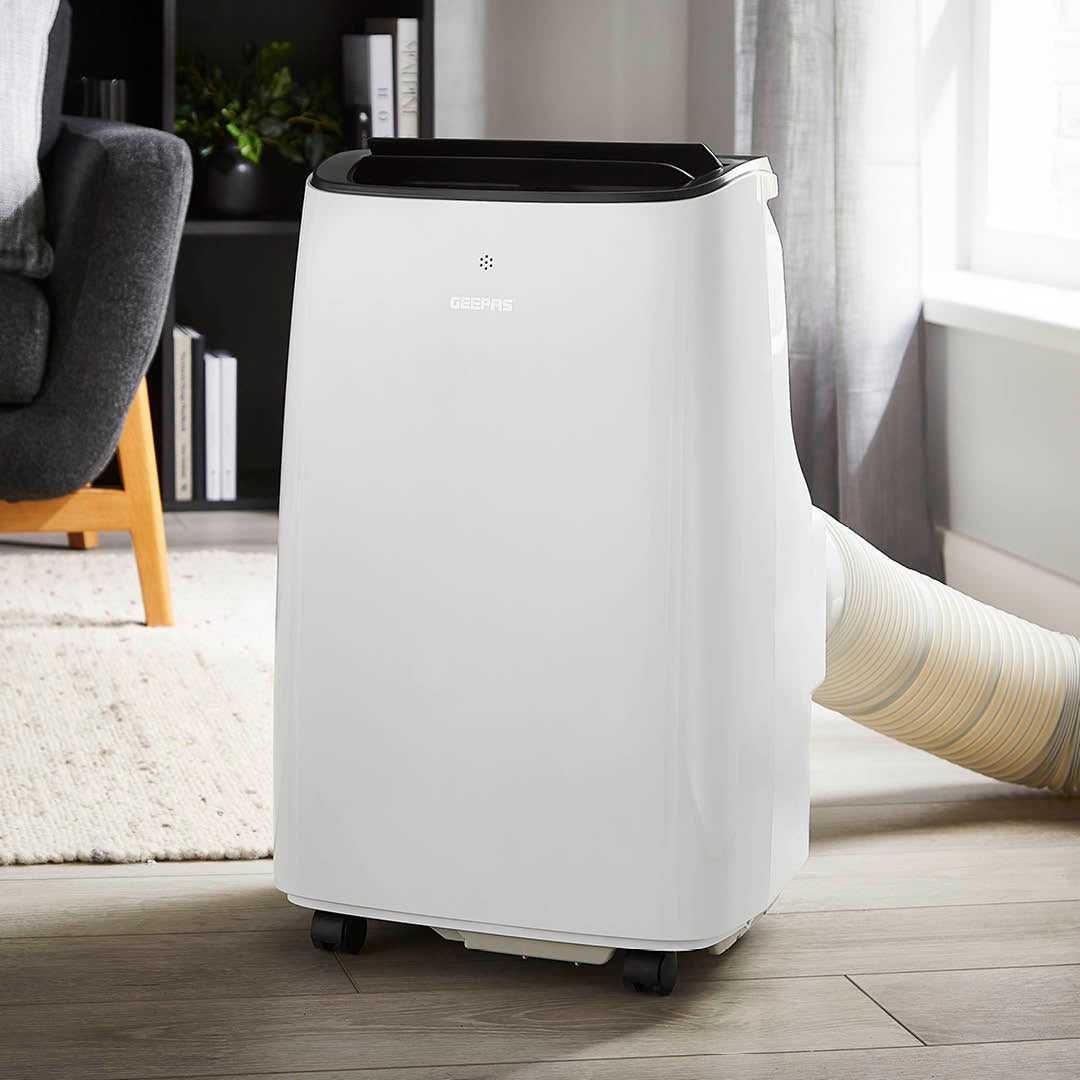Are you shopping for a portable air conditioner but feeling overwhelmed by all the options? You're not alone. The most crucial factor in choosing the right portable AC unit is getting the correct size for your space. Too small, and you'll be sweating through summer; too large, and you'll waste energy and money.
Explore the Geepas portable air conditioners collection
In this comprehensive guide, we'll walk you through everything you need to know about the sizing of portable air conditioners, understanding BTUs, and finding the perfect cooling solution for your home or office.
Understanding BTUs: The Key Of Air Conditioner Sizing
BTU (British Thermal Unit) is the standard measurement used to indicate a portable air conditioner's cooling capacity. Simply put, the higher the BTU rating, the more powerful the cooling performance.
But more isn't always better when it comes to portable AC units. Selecting a portable air conditioner with the right BTU rating for your specific space ensures optimal cooling efficiency and energy consumption.
Portable Air Conditioner Size Chart:
Here's a handy portable AC sizing chart to help you determine the appropriate BTU rating based on your room size:
| Room Size (sq. ft.) | Recommended BTU Rating |
|---|---|
| Up to 150 sq. ft. | 5,000-8,000 BTUs |
| 150-250 sq. ft. | 8,000-10,000 BTUs |
| 250-350 sq. ft. | 10,000-12,000 BTUs |
| 350-450 sq. ft. | 12,000-14,000 BTUs |
| 450-550 sq. ft. | 14,000-16,000 BTUs |
| 550-700 sq. ft. | 16,000-18,000 BTUs |
| 700-1,000 sq. ft. | 18,000-24,000 BTUs |
How To Calculate The Right Size Portable Air Conditioner For Your Space
While the chart above provides a good starting point, several factors can influence your portable AC needs. Follow these steps for a more precise calculation:
Step 1: Measure Your Room Dimensions
Start by measuring the length and width of the room where you plan to use your portable air conditioner. Multiply these numbers to get the square footage:
Room square footage = length x width
For example, a room that's 12 feet long and 15 feet wide has a square footage of 180sq.ft.
Step 2: Consider These Important Factors
Adjust your BTU requirements based on these factors:
- High ceilings: For ceiling heights over 8 feet, add 10% more BTUs for each additional foot.
- Sunlight Exposure: For heavily shaded rooms, reduce BTUs by 10%. For very sunny rooms, add 10% more BTUs.
- Occupancy: Add 600 BTUs for each additional person regularly in the room (beyond two people).
- Heat-Generating Appliances: Add 4000 BTUs if the space contains heat-generating appliances like computers or kitchen equipment.
Step 3: Calculate Your Total BTU Requirements
Add or subtract the appropriate percentages from your base BTU requirement (from the chart) to find your adjusted BTU need.
Geepas 9000 BTU 4-In-1 Portable Air Conditioner With Dehumidifier
Single-Hose vs Dual-Hose Portable Air Conditioners
When shopping for portable AC units, you'll encounter both single-hose and dual-hose models:
Single-Hose Portable Air Conditioners:
- More common and typically less expensive.
- Use one exhaust hose to expel hot air outside.
- It may create negative air pressure, causing warm air to be drawn in from other rooms.
- Generally less efficient than dual-hose models.
- Best for smaller spaces or occasional use.
Dual-Hose Portable Air Conditioners:
- Use one more intake hose and one exhaust hose.
- Maintain neutral air pressure for better efficiency.
- Cool rooms faster than single-hose units.
- Generally, more expensive.
- Ideal for larger spaces or continuous cooling needs.
Additional Features To Consider When Buying A Portable Air Conditioner
Once you've determined the right size portable AC for your space, consider these additional features:
- Energy Efficiency Ratio (EER): Higher EER ratings indicate better energy efficiency, potentially saving you money on electricity bills.
- Programmable Timer: Allows you to set cooling schedules to save energy.
- Remote Control: Offers convenient operation from across the room.
- Multiple Fan Speeds: Provides flexibility in cooling and noise levels.
- Dehumidifier Mode: Removes excess moisture from the air without cooling, ideal for humid days.
- Heating Function: Some portable AC units offer heating capabilities for year-round climate control.
7000 BTU 4-In-1 Portable Air Conditioner With Dehumidifier
Signs Your Portable Air Conditioner Is The Wrong Size
How can you tell if you've chosen the wrong size portable AC unit? Watch for these indicators:
Undersized Portable Air Conditioner Signs:
- The unit runs constantly without reaching the desired temperature.
- The room never feels completely comfortable.
- Higher than expected energy bills.
- Excessive wear on the unit due to constant operation.
Oversized Portable Air Conditioner Signs:
- Short cycling (turning on and off frequently).
- The room feels clammy or too humid.
- Temperature fluctuations throughout the space.
- Higher upfront costs without better cooling.
Energy Efficiency Tips For Portable Air Conditioners
Maximise your portable air conditioner's efficiency with these tips:
- Properly seal window kits to prevent hot air from entering.
- Clean or replace filters regularly (usually every 2-4 weeks), depending on the usage of the unit.
- Position your unit away from direct sunlight.
- Use ceiling or pedestal fans to help distribute cool air.
- Close doors and windows in the room being cooled.
- Use blackout curtains to reduce solar heat gain.
Conclusion: Finding Your Perfect Portable Air Conditioner
Choosing the right size portable air conditioner is crucial for effective cooling, energy efficiency, and comfort. By calculating your space's square footage and accounting for factors like sun exposure and occupancy, you can determine the optimal BTU rating for your needs.
Remember that portable AC units offer flexibility and convenience without the permanent installation required by window or central air systems. With the right size portable air conditioner, you can enjoy cool, comfortable air wherever and whenever you need it.



